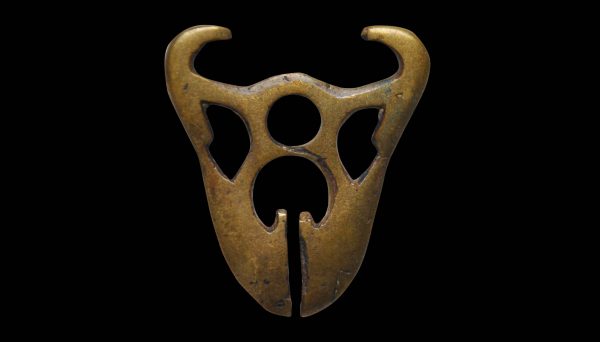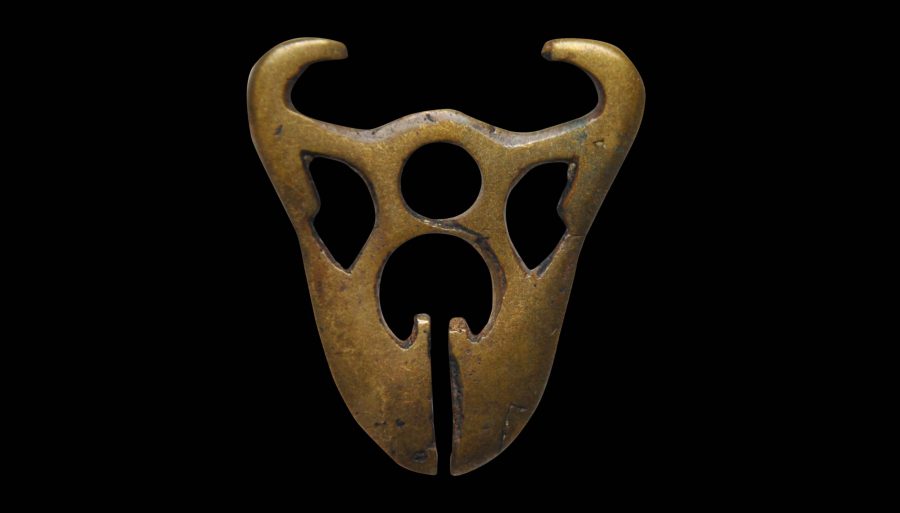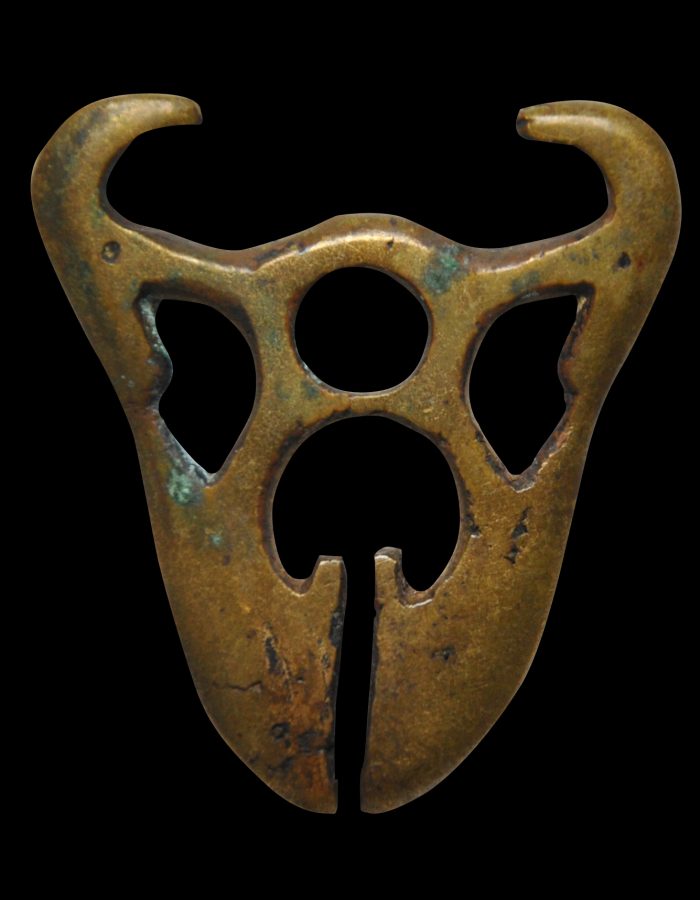This linglingo pendant from the Bontoc people of northern Luzon island in the Philippines is of cast brass. It has a relatively uncommon form probably based on an abstract representation of the female reproductive organs with two zoomorphic-like ‘heads’ emerge from the top. The pendant might also have been used as an ear ornament.
A linglingo pendant of this unusual form is illustrated in Rodgers (1995, p. 306). Linglingo is the generic Cordillera term for pendants and possibly earrings that have a basic closed ‘C’ form which appear to be based on the female reproductive organs (Afable et al, 2013, p. 292). The form is probably archaic and so such a reference might have been lost, with the form becoming more abstract. However, it is likely that such ornaments continued to have fertility or at least talismanic associations.
The evocative abstract form of the linglingo makes them small items of personal sculpture. The Musee du Quai Branly in Paris chose to have a linglingo as its cover illustration for the catalogue that accompanied its landmark exhibition on the Philippines in 2013.
The example here has wonderful smoothness and patina from handling and age.
References
Afable, P., et al, Philippines: an Archipelago of Exchange,ACTES SUD/ Musee du Quai Branly, 2013.
Moltzau Anderson, E., In the Shape of Tradition: Indigenous Art of the Northern Philippines, C. Zwartenkot Art Books, 2010.
Richter, A., The Jewelry of Southeast Asia, Thames & Hudson, 2000.
Rodgers, S., Power and Gold: Jewelry from Indonesia, Malaysia and the Philippines, The Barbier-Mueller Museum, Geneva, 3rd ed. 1995.




